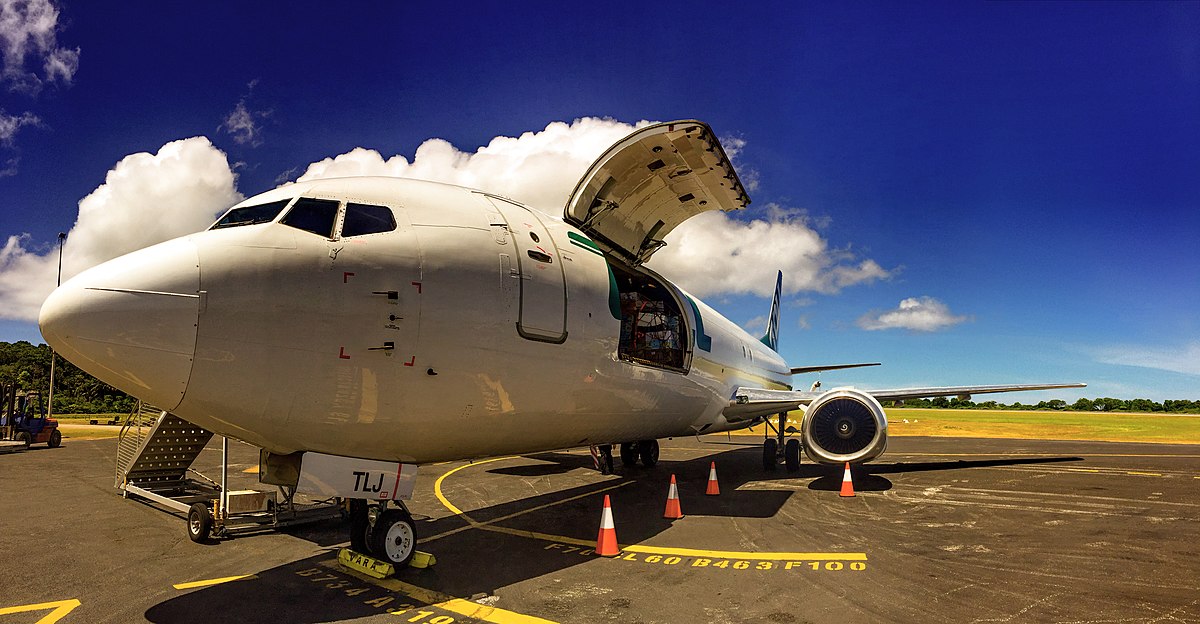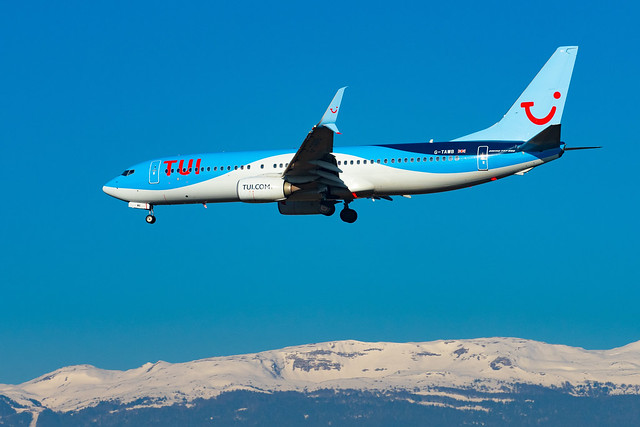Airwork B734 near Perth on Jun 10th 2022, unreliable airspeed
Last Update: April 13, 2023 / 09:48:10 GMT/Zulu time
Incident Facts
Date of incident
Jun 10, 2022
Classification
Incident
Airline
Airwork
Flight number
TFR-13
Departure
Perth, Australia
Destination
Christmas Island, Christmas Island
Aircraft Registration
ZK-TLJ
Aircraft Type
Boeing 737-400
ICAO Type Designator
B734
The ATSB opened a short investigation into the occurrence rated an incident.
On Apr 13th 2023 the ATSB released their final report concluding the probable causes of the incident were:
Contributing factors
- While operating in reduced vertical separation minimum airspace, a 340 ft discrepancy between the captain’s and first officer's altitude indication was observed when at the designated cruise altitude.
Other factors that increased risk
- The operator used pitot-static probes made from polyvinyl chloride material, which increased the risk of the covers melting onto the probes if left on during engine operation.
The ATSB analysed:
Altitude discrepancy
The FO’s call of 1,000 ft remaining until the assigned cruising altitude of FL330 differed from what was observed at that time by the captain on their respective altimeter. Likewise, after reaching that altitude, a 340 ft discrepancy was also identified between the FO’s and captain’s altimeters. This was consistent with the recorded flight data, which showed about the same discrepancy at the top of climb. The discrepancy varied during cruise flight between about 300–390 ft and always maintained a FO’s altimeter high indication. At the time, the flight was operating with a reduced vertical separation of 1,000 ft between other aircraft.
While the flight crew also identified slight differences between the indicated airspeeds and Mach numbers, these were within the manufacturer’s stipulated error limits for flight as stated in the Quick Reference Handbook.
Plastic pitot covers
The aircraft manufacturer recommended the use of Kevlar™ pitot-static probe covers as this material could withstand the high temperatures associated with the automatic operation of the pitot heat system at engine start if the covers were inadvertently left fitted. However, the operator had sourced locally made polyvinyl chloride covers, which were less resistant to heat. This increased the risk of the covers melting onto the probes if left on during engine operation.
Covers not removed prior to maintenance
The Airwork 737-300/400 ground run checklist required the removal of the pitot-static probe covers and isolation of the pilot heat system. However, the operator reported that the checklist was not used when performing the scheduled engine wash 2 days prior to the incident flight.
Rather, maintenance personnel completed the task by memory. This resulted in the pitot-static probe covers not being removed and the pitot-static heat circuit breakers not being opened prior to engine motoring and start. The risk of performing a maintenance error was potentially exacerbated by the maintenance personnel carrying out the task in alternating stages, with limited communication between them, as reported by the operator. As a result, the covers melted, and residue was deposited onto all 4 pitot-static probes.
Pitot-static probe residue
After identifying that the pitot-static probe covers had melted, the probes were cleaned and a visual inspection performed, before being returned to service. However, a post-incident inspection of the probes and the ATSB’s examination found residue from the covers remained on the probe surfaces.
Despite this, the analysis of the QAR data showed a stable altimetry system error extending back to the 7 flights after the engine wash. Further, the 7 flights had been completed between the wash and the incident flight with no reported altitude discrepancies from flight crews. Although the decision to not replace the pitot-static probes increased the risk of error resulting from turbulent air over the static pressure sensing ports, the QAR data did not demonstrate a link between the remaining residue and the incident flight.
Altimetry error in RVSM airspace Consistent with the recorded data, the flight crew noted a 340 ft altitude discrepancy when at FL 330. If the primary altimeters diverged by greater than 200 ft when operating in RVSM airspace, ATC were to be notified. While the captain notified ATC that they required a descent and a subsequent return to Perth for operational reasons, they did not advise them of the discrepancy.
This was based on the flight crew’s understanding that they had established the FO’s altimeter was accurate.
Altimetry system errors not only result in erroneous indications to the flight crew, but the protection systems afforded by ATC and the aircraft’s traffic alert and collision avoidance system can also be degraded. Therefore, it is important that flight crews advise ATC of any errors so ATC can assure adequate vertical separation exists with other aircraft.
Incident Facts
Date of incident
Jun 10, 2022
Classification
Incident
Airline
Airwork
Flight number
TFR-13
Departure
Perth, Australia
Destination
Christmas Island, Christmas Island
Aircraft Registration
ZK-TLJ
Aircraft Type
Boeing 737-400
ICAO Type Designator
B734
This article is published under license from Avherald.com. © of text by Avherald.com.
Article source
You can read 1 more free article without a subscription.
Subscribe now and continue reading without any limits!
Read unlimited articles and receive our daily update briefing. Gain better insights into what is happening in commercial aviation safety.
Send tip
Support AeroInside by sending a small tip amount.
Related articles
Airwork B734 at Sydney and Auckland on Jun 7th 2022, incorrect fuel configuration
An Airwork Boeing 737-400 freighter, registration ZK-TLL performing flight HT-2 from Sydney,NS (Australia) to Auckland (New Zealand) with 2 crew,…
Airwork B733 at Darwin on Nov 4th 2021, cabin did not pressurize
An Airwork Flight Operations Boeing 737-300 freighter, registration ZK-FXK performing flight TFR-51 from Darwin,NT to Brisbane,QL (Australia), was…
Airwork B733 at Honiara on Jan 26th 2014, gear collapse on landing
An Airwork Boeing 737-300 on behalf of and in Toll Group Livery, registration ZK-TLC performing freight flight PAQ-523 from Brisbane,QL (Australia)…
Airwork B733 near Auckland on Apr 7th 2013, engine shut down in flight
An Airwork Boeing 737-300 freighter, registration ZK-FXT performing test flight HT-46 from Auckland to Auckland (New Zealand) with 3 crew, was…
Newest articles
TUI B738 at East Midlands on Dec 16th 2024, flight attendant falls off aircraft
A TUI Airways Boeing 737-800, registration G-TAWB performing flight BY-7719 from East Midlands,EN (UK) to Arrecife,CI (Spain) with 125 passengers and…
Commute E145 at Roanoke on Sep 24th 2025, overran runway and ended in EMAS
A CommuteAir Embraer ERJ-145 on behalf of United, registration N21129 performing flight UA-4339 from Washington Dulles,DC to Roanoke,VA (USA) with 50…
Subscribe today
Are you researching aviation incidents? Get access to AeroInside Insights, unlimited read access and receive the daily newsletter.
Pick your plan and subscribePartner

ELITE Simulation Solutions is a leading global provider of Flight Simulation Training Devices, IFR training software as well as flight controls and related services. Find out more.
SafetyScan Pro provides streamlined access to thousands of aviation accident reports. Tailored for your safety management efforts. Book your demo today
AeroInside Blog
Popular aircraft
Airbus A320Boeing 737-800
Boeing 737-800 MAX
Popular airlines
American AirlinesUnited
Delta
Air Canada
Lufthansa
British Airways


